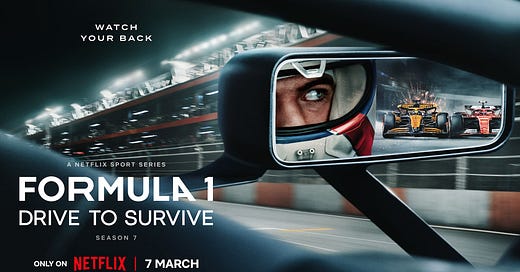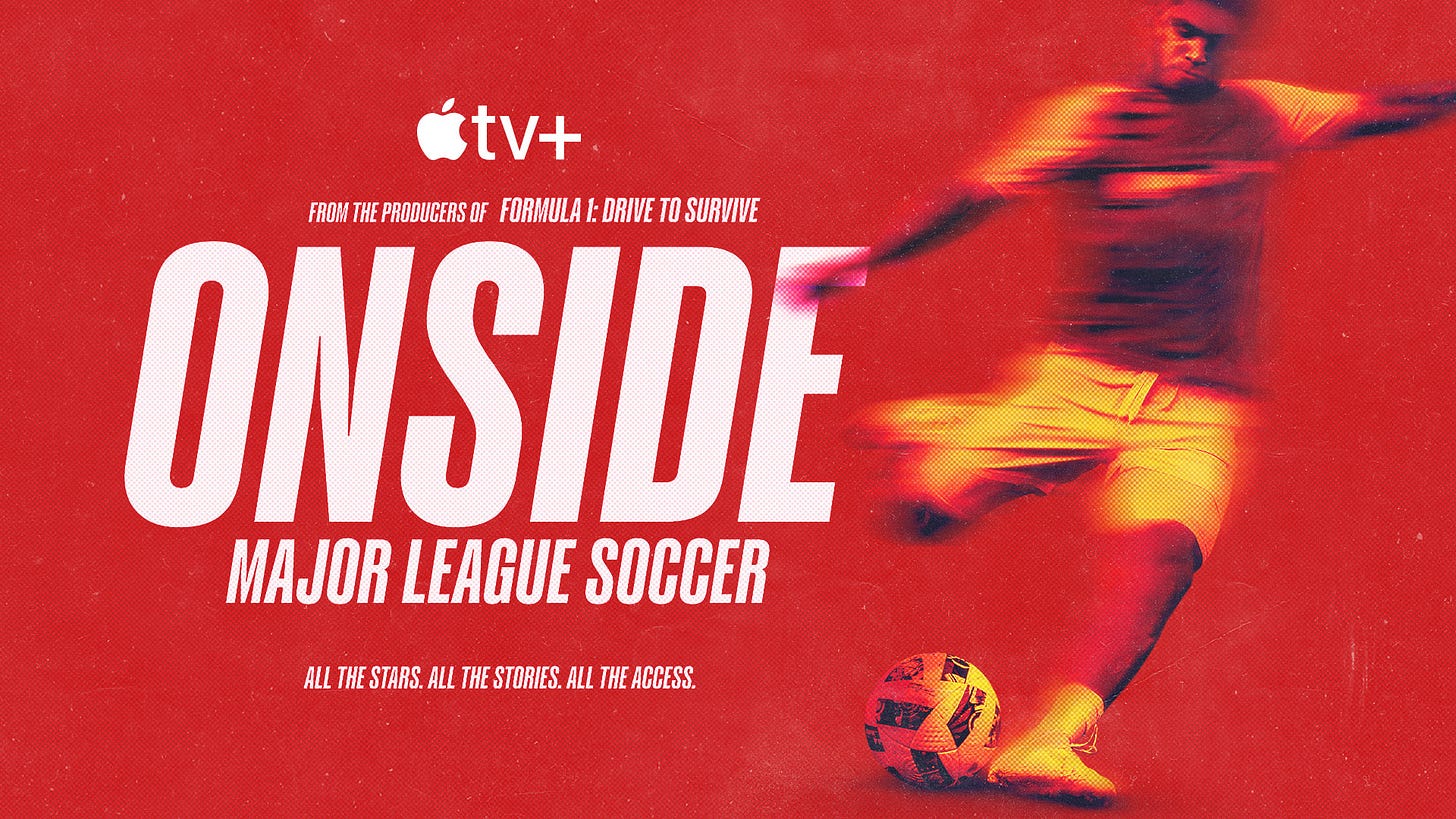We Have To Do Something About Sports Documentaries
Every sporting event does not need to be documented by a camera crew.
I’m not the first person to write this, but it bears repeating: There is a sports documentary crisis. While I understand and accept that there are other, more pressing, crises facing our world, I believe we can walk and chew gum at the same time. It’s time to hit the big red pause button on all sports documentaries.
Like most problems in the streaming sludge era, sports docs are harmed by the pursuit of abundance and maximalism. There are too many of them. Four of the biggest providers dropped lavish long-form sports docs in the past month: Formula 1: Drive to Survive season seven and Full Swing season three (Netflix), Onside: Major League Soccer and Fight for the Glory: 2024 World Series (Apple TV+), For The Win: NWSL (Amazon), and Celtics City (Max). These releases followed other high-profile efforts from Q1 of this year, including Netflix’s Court of Gold and The Greatest Rivalry: India vs. Pakistan, Paramount+’s Pulisic, and another season of Hard Knocks on Max. As a sports and sports documentary fanatic, the deluge of releases is too much.
Beyond the flawed pursuit of subscriber growth undergirding all provider programming decisions, two culprits are to blame for the sports doc explosion: The Last Dance and Drive to Survive. The Last Dance debuted to a rapturous homebound audience during the early stages of the COVID-19 pandemic in 2020, inspired numerous memes, and convinced other legacy sports franchise owners that they, too, needed a boated hagiographic docuseries. The Last Dance is why HBO let Bill Simmons make Celtics City and why Netflix is working with Jerry Jones on a Dallas Cowboys project set to release later this year.
Meanwhile, Box To Box Films’ season-long look at F1 racing debuted in 2019 (focused on the 2018 campaign) and, if common sports media discourse is to be believed, supercharged the sport’s popularity in the United States. Nielsen data suggests the Netflix series has inspired a much smaller increase in U.S.-based F1 fandom (2.3 percent). The Entertainment Strategy Guy has also written about Drive to Survive’s declining viewership in recent seasons. Nonetheless, the industry logic in the 2020s has been that the series is a massive success and every sports league—especially the smaller ones—needs its own Drive to Survive.
Many leagues have followed that logic to mixed results. Onside, produced by the Box To Box folks, is occasionally engaging but narrows down a long MLS season (with a then 29-team league) into eight episodes focused on just a handful of squads. The bits I’ve seen of For The Win are similarly fine if too star-driven. Netflix’s partnerships with the NFL (Quarterback) and the NBA (Starting 5) have produced a few headlines for websites and social content accounts that trade in empty controversy, but they aren’t good documentaries.
The reality is that season-long access documentaries require access. And as many smarter people have articulated, access often comes with strings attached. Athletes, teams, and leagues shape how the stories are told. When they don’t get that power, like in the case of Drive to Survive, they complain about how the documentarians take events out of context.
More importantly, these season-long docs reflect the insidious desire to overdocument. Technology exists to shoot and distribute information about every moment of our lives, so we must do so. Of course, there are interesting stories to be told about an athlete or a league across a season. But repeatedly returning to the same athletes or leagues as if documentation is, by default, necessary is not the way to find those stories. Drive to Survive wrestles with that idea in season seven by building an episode around five drivers “filming” themselves on their phones. The visual shifts don’t make for much of a narrative one, though. Turns out, some of the guys like to fly private and sleep in before practice days. Quarterback and Starting 5 think that swapping in one guy for another is enough.
The overdocumentation is particularly frustrating given how often athletes post on social media and host podcasts during the season. Teams and leagues produce mini-documentaries about last night’s game. Most of them have their own YouTube series or podcasts. It’s fine if they do those things, but it’s also funny when a documentary tries to sell us that we’re about to really go behind the scenes. Those dudes couldn’t stop posting from Paris! The allegedly special access granted to producers of Court of Gold isn’t that special.
Streaming companies keep churning out sports documentaries to maintain good relationships with the leagues. Netflix parlayed its documentary partnerships with the NFL and PGA into live events, including regular-season action. Apple and Amazon have pre-existing live broadcasting deals with MLB, MLS, and NWSL, so the documentaries help drive eyes back to the games. But if the docs aren’t particularly good right now and they aren’t that popular with the general streaming subscriber, there comes a time when the content juice isn’t worth the squeeze. This year is as good as any to stop this.
This is TV Plus, a newsletter about television written by Cory Barker, a media studies professor and veteran blogger. Readers can expect dispatches on industry trends, overlooked shows, and historical antecedents to current events.
You can follow me on Bluesky or email me at barkerc65[at]gmail.com. Thanks for tuning in.








When Starting Five didn't pop with Lebron, that should've been alarm bells for this cottage industry